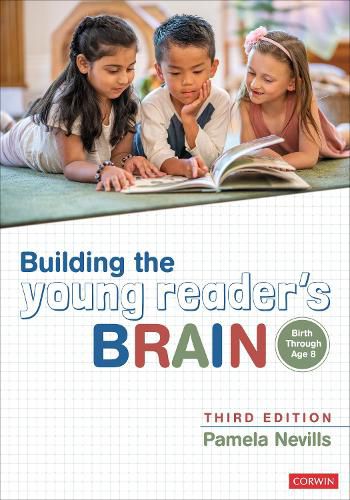Readings Newsletter
Become a Readings Member to make your shopping experience even easier.
Sign in or sign up for free!
You’re not far away from qualifying for FREE standard shipping within Australia
You’ve qualified for FREE standard shipping within Australia
The cart is loading…






A practical guide to teaching the way a child's brain learns best
In this update of a bestselling classic, you will learn how to develop children's capacity and will to read. Each sequential chapter is practical, eye-opening, and exactly what you need to engage young learners, plan lessons, partner with parents, and align your PreK-3 classrooms to the science of learning and the science of reading. Gain the latest insights on:
Brain development from birth to age eight, plus the skills to nourish it, age by age and grade by grade What the latest neuroscientific research now says about oral language acquisition The evidence base for practices such as read alouds, inventive spelling, and sustained silent reading Why vocabulary building must happen concurrently with phonological processing, decoding, fluency, spelling, and writing How to artfully combine explicit teaching of skills with playful, multi-sensory routines every day
All aspects of memory are needed to develop successful readers. When we engage children's brains and build our teaching practices around what we know about how the human brain makes meaning, literacy learning makes more sense for children... and for us.
$9.00 standard shipping within Australia
FREE standard shipping within Australia for orders over $100.00
Express & International shipping calculated at checkout
A practical guide to teaching the way a child's brain learns best
In this update of a bestselling classic, you will learn how to develop children's capacity and will to read. Each sequential chapter is practical, eye-opening, and exactly what you need to engage young learners, plan lessons, partner with parents, and align your PreK-3 classrooms to the science of learning and the science of reading. Gain the latest insights on:
Brain development from birth to age eight, plus the skills to nourish it, age by age and grade by grade What the latest neuroscientific research now says about oral language acquisition The evidence base for practices such as read alouds, inventive spelling, and sustained silent reading Why vocabulary building must happen concurrently with phonological processing, decoding, fluency, spelling, and writing How to artfully combine explicit teaching of skills with playful, multi-sensory routines every day
All aspects of memory are needed to develop successful readers. When we engage children's brains and build our teaching practices around what we know about how the human brain makes meaning, literacy learning makes more sense for children... and for us.